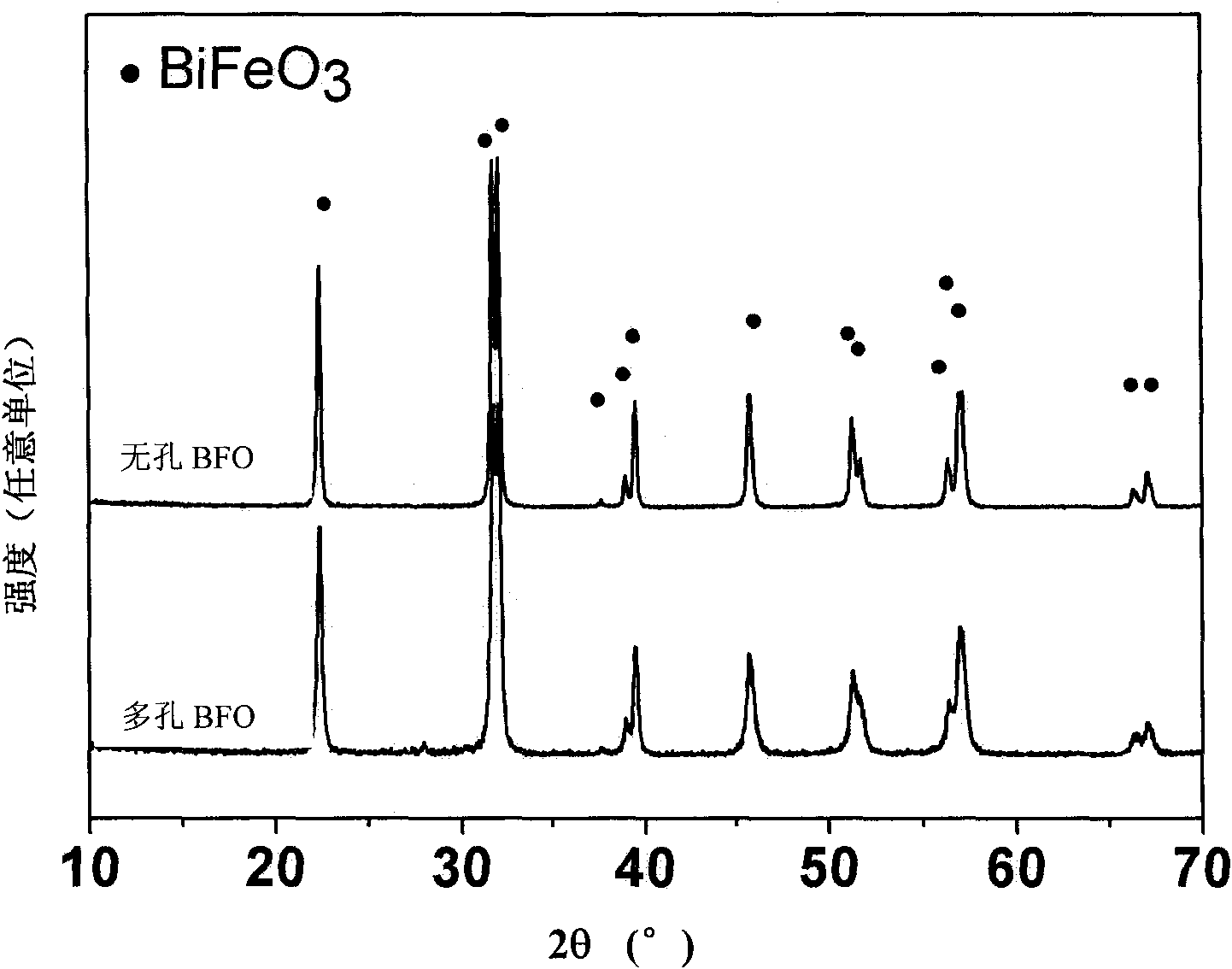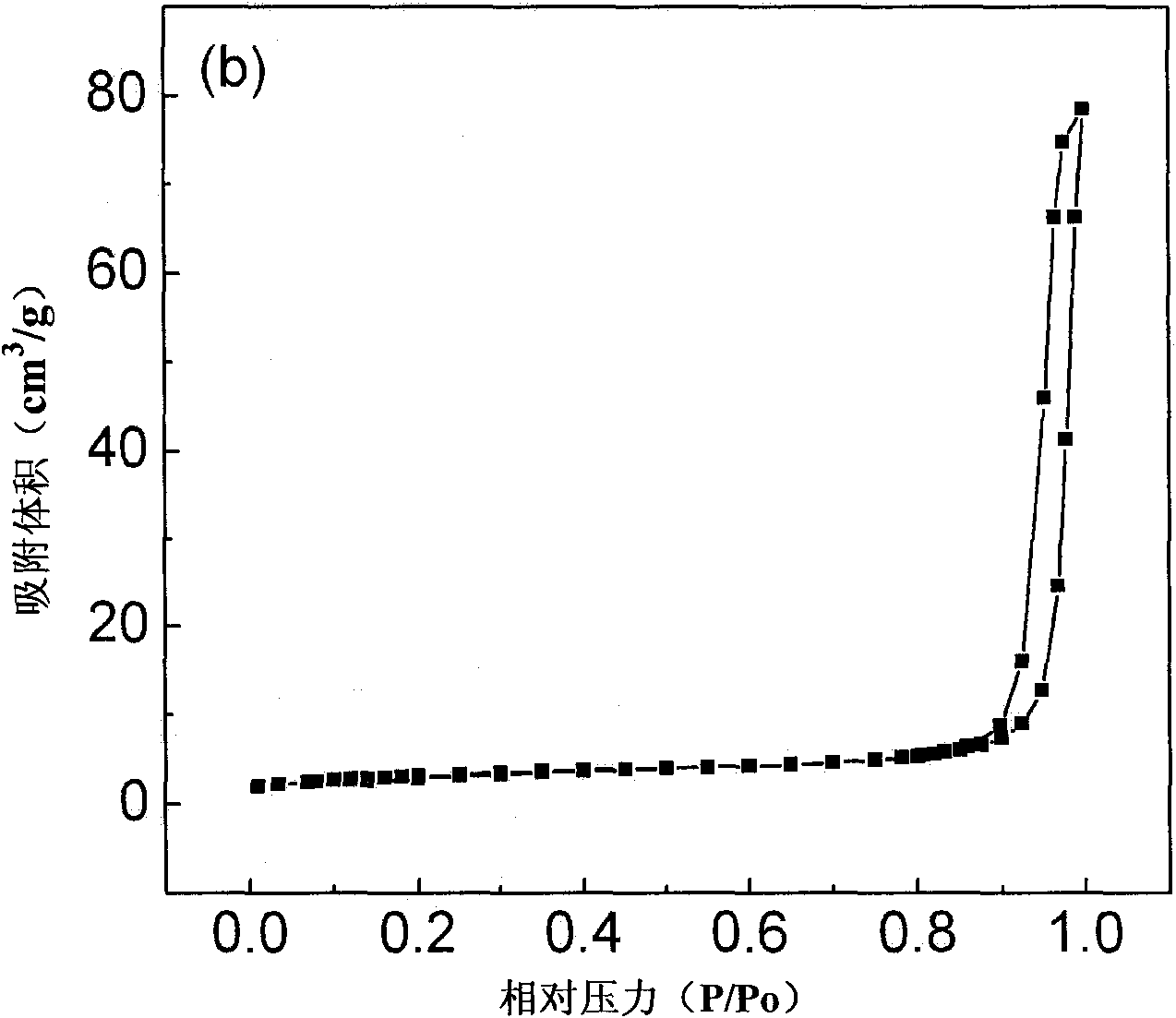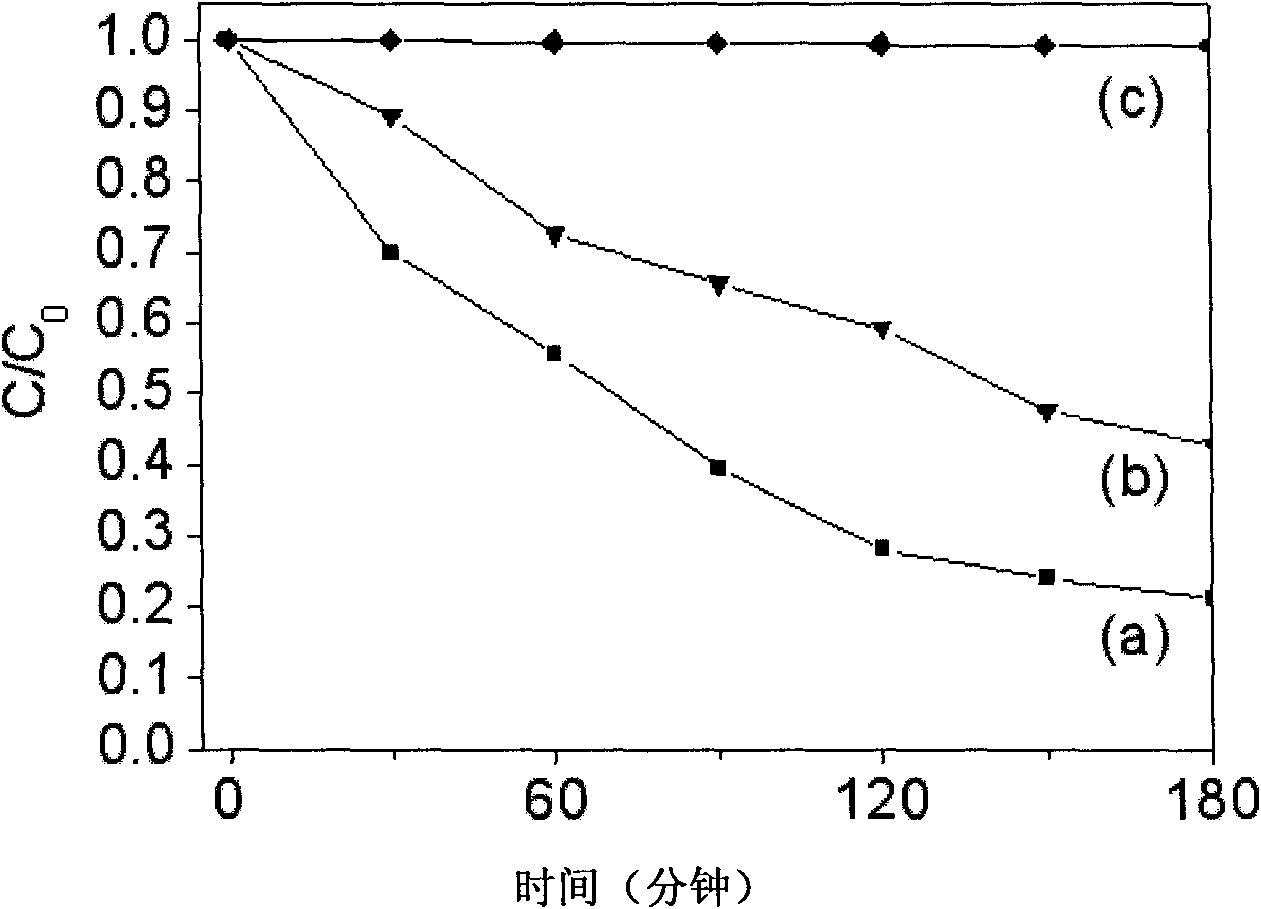Method for synthesizing porous BiFeO3 nano microcrystal by using P123 assisting sol gel process
A sol-gel method, P123 technology, applied in the direction of nanotechnology, nanotechnology, nanostructure manufacturing, etc., can solve the problems of inadaptability to the concept of green conservation and environmental protection, grain growth, impurity, low efficiency, etc.
- Summary
- Abstract
- Description
- Claims
- Application Information
AI Technical Summary
Problems solved by technology
Method used
Image
Examples
Embodiment
[0018] Embodiment: the preparation process and steps in the present embodiment are as follows:
[0019] (1) Preparation of raw materials: Weigh 4.0400g of analytically pure Fe (NO 3 ) 3 9H 2 O and 4.8507g of analytically pure Bi(NO 3 ) 3 ·5H 2 O is used as a raw material, the two are mixed and placed in a 150ml round bottom flask;
[0020] (2) Preparation of sol: Add 20ml of analytically pure ethylene glycol into the above-mentioned flask as a solvent and a complexing agent, and through magnetic stirring, completely dissolve the inorganic salt raw material to become a uniform mixed solution; add 1ml of analytically pure glacial acetic acid as a stabilizer , put the above solution in an oil bath device, and stir at a constant temperature of 70°C for 30 minutes. At this time, a condensation reflux device should be added to prevent the solution from evaporating too quickly; Stir at constant temperature for 2 hours at ℃ to obtain a maroon sol;
[0021] (3) Formation of gel:...
PUM
| Property | Measurement | Unit |
|---|---|---|
| particle diameter | aaaaa | aaaaa |
| particle diameter | aaaaa | aaaaa |
| particle size | aaaaa | aaaaa |
Abstract
Description
Claims
Application Information
 Login to View More
Login to View More - R&D
- Intellectual Property
- Life Sciences
- Materials
- Tech Scout
- Unparalleled Data Quality
- Higher Quality Content
- 60% Fewer Hallucinations
Browse by: Latest US Patents, China's latest patents, Technical Efficacy Thesaurus, Application Domain, Technology Topic, Popular Technical Reports.
© 2025 PatSnap. All rights reserved.Legal|Privacy policy|Modern Slavery Act Transparency Statement|Sitemap|About US| Contact US: help@patsnap.com



